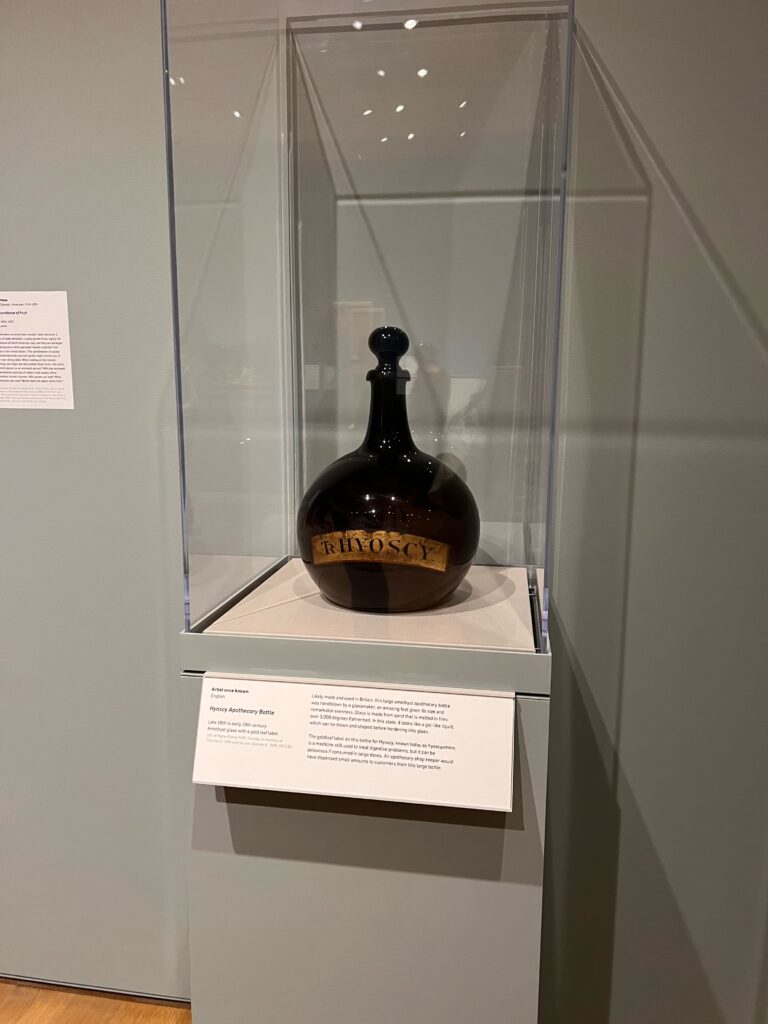
Spoiled as I was on my off term with the veritable cornucopia of culture that Houston, Texas, has to offer, I could safely have been placed in the ever illusive and highly sought-after category of “museum-goer.” This term, attempting to maintain this spirit even with classes in session and my love for the arts a little unfulfilled in Hanover, I finish my grilled cheese at the Courtyard Cafe and decided to join the guided tour of the Hood Museum’s latest exhibit Liquidity: Art, Commodities, and Water.
The exhibition is curated by Michael Hartman, a relatively new member of the Hood’s curatorial staff. Hartman’s previous exhibitions “reframe and redesign approaches to art made in North America.” To create Liquidity, Hartman searched through the museum’s archives, showcasing pieces that were tucked away from the public for over a decade. Next to me in the audience were roughly twenty Hanover locals and two other students, whom, on account of my unfamiliarity with them, I wrote off as freshmen.
As a brief aside, for a museum that exists to serve both the Hanover community and Dartmouth students, the Hood Museum is a tad hostile towards anyone who looks like he or she isn’t of the age to receive Social Security benefits. While I stood in line waiting for the tour to begin, I was accosted by not one but two museum employees informing me that it is strictly forbidden to bring a backpack or parka into the exhibit and directing me to the museum’s lockers. I had neither a backpack nor a parka on my person.
The exhibition Liquidity focuses on the concept of passageways, preservation, and pollution of water. Further, it holds, art, commodities, and water are all things to be passed, preserved, and polluted. This explanation was a bit on the nose, if you ask me, but my fellow audience members devoured what Hartman had to say. The Hanoverians seemed to be in some sort of competition over who could be the most inquisitive yet least insightful participant of the tour. Several among them tied for first place.
The opening piece of the exhibition is a ceramic water jug by David Drake, an enslaved man who lived in South Carolina during the 1800s. The jug is certainly well crafted, and the narrow opening, Hartman said, shows its explicit use for liquid storage, as opposed to other jugs that would have been used to store cereal grains. Through his pottery, Drake built a shared knowledge among enslaved young people, and he is recognized as the first enslaved potter to inscribe his work.
From this reflection on Drake’s humble yet beautiful work, Hartman shifted our attention to a portrait of Puritan aristocrat Jonathan Simpson by Joseph Blackburn. Simpson is dressed in an elegant yet understated copper-tone silk suit, and his portrait juxtaposes that of Our Lady of Pomota, an extravagant and ornate representation of the cultural fusion between the Spanish and indigenous Andeans in Peru. Our Lady of Pomota dons pearl strand on pearl strand over an intricately embroidered brocade cape. These depictions would not be possible without the transfer of the garments therein over water. At this point, the curation lost me. While it is, indeed, a noble task to work with what one has on hand and build an exhibition from those items, in this instance, water seemed to be the fraying thread loosely binding the exhibition together.
The tour continued into the next room, where the artwork is contextualized by the pollution of water. One piece in particular stood out to me: William Louis Sonntag’s Boat Yard on the East River. It is not exactly beautiful, but it could be. This effect, I suppose, is an artist’s display of pollution. One of the aforementioned Hanoverians was already commenting over Hartman about the piece to explain that you simply must visit Thomas Moran’s inspiration in East Hampton to fully appreciate Sonntag’s work. Her talking point expired quickly, and, to my pleasant surprise, Hartman redirected the dialogue to a parallel between contemporary and classical representations of pollution.
The exhibition was inspired, Hartman said, by his experience with water following an E. coli outbreak in Enfield a few years ago. When his only source of drinking water was from Hannaford’s, water became a more complex subject to Hartman than it ever was before. Liquidity is built on an intriguing concept, but in the absence of a guided tour, I would have been lost attempting to ascertain what Inupiaq ivory animal figurines and a Joseph Blackburn portrait were doing in the same room.
I commend Michael Hartman on his latest exhibition at the Hood. Though not entirely to my tastes, his curation is surely not without merit. And, most importantly, it brings the Hanoverians out of hiding to enjoy the finest (and only) museum Hanover has to offer.

💚